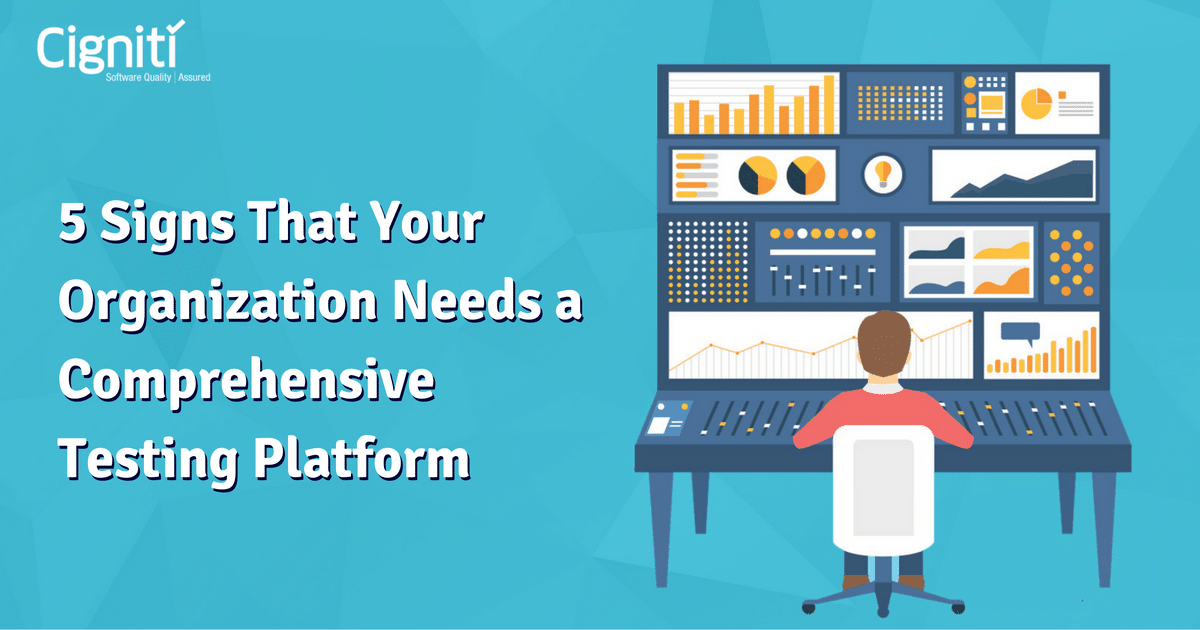37 Epic Software Failures that Mandate the Need for Adequate Software Testing
|
Listen on the go!
|
Disaster is an understatement for any brand/organization/institution that has incurred losses due to an overtly minuscule but catastrophic software glitch. While technology and innovative applications have empowered brands, enterprises have recorded numerous disabling instances.
Software disasters have the potential to cause widespread disruptions and highlight the importance of rigorous testing and quality control measures in preventing catastrophic software failures.
Any application’s unexpected crashes and data inconsistencies were a direct result of the failure in software testing, revealing significant gaps in the quality assurance process. In this run on top software failures of 2016 -2015-2014, we take stock of the debacles/glitches that have changed the face of software development and endorsed the role of testing in the overall SDLC process.
Top Software Failures: Glitches and Debacles That Transformed Software Development
The failure in software testing was witnessed by brands and enterprises across diverse industries, and here is a list of software glitches/technical issues. Please note that the numbers 1-37 do not signify the high or low impact of the software glitch on the brand/enterprise.
-
Yahoo reports breach
Amongst the most recent data breaches, on September 22, 2016, Yahoo confirmed a data breach that exposed about 500 million credentials that date back to four years. It is considered among the largest credential leaks of 2016. The company believes that this was a state-sponsored breach, where an individual on behalf of a government executed the entire hack. It further urged users to change their passwords and security questions. As a relief for the users, Yahoo stated that sensitive financial data like bank accounts and passwords was not stolen as part of the breach.
Source: Money.cnn.com
-
Nest thermostat freeze
Software update for the Nest ‘smart’ thermostat (owned by Google) went wrong and literally left users in the cold. When the software update went wrong, it forced the device’s batteries to drain out, leading to a temperature drop. Consequently, the customers could not heat their homes or use any amenities.
Nest claimed that the fault was due to a December 4.0 firmware update, with related issues such as old air filters or incompatible boilers. Later, it released a 4.0.1 software update that solved the issue for 99.5% of affected customers.
Source: Cio-asia.com
-
HSBC’s major IT outage
Software update for the Nest ‘smart’ thermostat (owned by Google) went wrong and literally left users in the cold. When the software update went wrong, it forced the device’s batteries to drain out, leading to a temperature drop. Consequently, the customers could not heat their homes or use any amenities.
Nest claimed that the fault was due to a December 4.0 firmware update, with related issues such as old air filters or incompatible boilers. Later, it released a 4.0.1 software update that solved the issue for 99.5% of affected customers.
Source: Cio-asia.com
-
Prison Break
A glitch that occurred in December 2015 led to over 3,200 US prisoners being released before their declared date. The software was designed to monitor prisoners’ behavior and was introduced in 2002. The problem occurred for about 13 years; on average, prisoners were released almost 49 days in advance.
Source: Cio-asia.com
-
HSBC payments glitch
In August 2015, HSBC failed to process about 275,000 individual payments, leaving many without pay before a long Bank Holiday weekend. This occurred due to a major failure with the bank’s electronic payment system for its business banking users, affecting individual payments. Bacs, a payment system used for payment processes across the UK, later picked up on this issue, labeling it as an ‘isolated issue’.
Source: Cio-asia.com
-
Bloomberg cancels debt issue
In April 2016, Bloomberg’s London office faced a software glitch, where its trading terminals went down for two hours. This came up at an unfortunate time when the UK’s Debt Management Office (DMO) was about to auction a series of short-term Treasury bills. Later, in a statement, Bloomberg declared that the services were restored, and the glitch resulted from hardware and software failures in the network, resulting in excessive network traffic.
Source: Cio-asia.com
-
RBS payments failure
About 6 lakh payments failed to get through the accounts of RBS overnight in June 2015, which included wages and benefits. Bank’s chief admin officer stated it was a technology fault, and there was no further detail on the real cause. In 2012, about 6.5 million RBS customers had to face an outage caused due to a batch scheduling software glitch, where the bank was fined £56 million.
Source: Cio-asia.com
-
Airbus software bug alert
In May 2015, Airbus issued an alert for urgently checking its A400M aircraft when a report detected a software bug that had caused a fatal crash earlier in Spain. Before this alert, a test flight in Seville caused the death of four Air Force crew members, and two were left injured.
Source: Theguardian.com
-
UK government’s new online farming payments system gets delayed
In March 2015, the UK government delayed the launch of a £154 million rural payments system. The system is an online service for farmers to apply for Common Agricultural Policy payments from the EU. This online service, which was supposed to be up and running by May 2015, was delayed due to integration issues between the portal and the rules engine software. It was then not expected to be up even by 2016.
Source: Computerworlduk.com
-
Co-op Food’s double charges
In July 2015, Co-operative Food apologized to its customers and promised a refund within 24 hours. The reason was a ‘one-off technical glitch’ while processing the software that resulted in customers being charged twice.
Source: Computerworlduk.com
-
John Lewis
Mispricing is a common headache faced by retailers due to system glitches, resulting in retail outlets offering customers excessively lucrative offers. John Lewis is a recent example, where the online retailer witnessed a price glitch on its website that erroneously advertised hardware at software rates.
Source: Money.aol.co.uk
-
Tesco iPad pricing disaster
In March 2012, Apple iPads worth £650 were priced at £49.99. After the glitch was identified, Tesco canceled the sale and did not respond to these orders, resulting in customer dissatisfaction.
Source: Mycustomer.com
-
Marks & Spencer 3D TV glitch
In January 2012, 50-inch 3D TVs worth £1,099 went up on sale for a mere £199 on the Marks and Spencer website. Eventually, the company decided to sell the Plasma TV sets at a lower price after it faced a customer petition. The online petition called ‘Marks & Spencer supply our TVs that we paid for’ compelled M&S to honor the orders.
Source: Thisismoney.co.uk
-
Reebok’s free trainers
In November 2013, Sports retailer Reebok trainers worth £100 were picked up for free from the online site, where the customers were only being charged for delivery. While the company did not honor the orders and apologized to the customer, they refunded the delivery charges and additionally gave 20% off on their next order. The pricing glitch went viral on Facebook and other sport and price deal forums, where shoppers rushed to grab £99.95 CrossFit Nano Speed footwear for just £8.50 postage.
Source: Theguardian.com
-
Tennessee County kills System Update worth $1Million
After investing two years of labor and investment worth $1 Million, Rutherford Country of Tennessee, US, called off a court software system update. The core reason was that the software glitches were identified right when the deal took place, where problems related to the issuance of checks, errors on circuit court dockets, and creation of hidden charges came up in the weeks after it went Live.
Source: 99tests.com
-
Software Security Flaws Revealed in OLA’s Mobile App
Ola, India’s largest taxi aggregator, faced major security flaws within their system. The software bugs detected helped basic programmers enjoy unlimited free rides – at the expense of Ola and at the expense of users. The issue went public when customers brought up the weaknesses in the system. Ola tried to fix bugs when the complaints soared up and it was alarming for the brand’s reputation in the marketplace.
Source: Economictimes.indiatimes.com
-
Leeds Pathology IT crash
In September 2016, Leeds Teaching Hospitals NHS Trust, one of Europe’s largest teaching trusts, witnessed a pathology IT crash that delayed operations for almost 132 patients. Leeds Teaching holds a budget of £1 billion and employs over 16,000 staff. It serves 780,000 people in the city and provides expert care for 5.4 million patients. The outage further affected Bradford Teaching Hospitals NHS Foundation Trust, GP services in Leeds, and a minor number of GP services in Bradford.
Now that’s the impact!
Source: Digitalhealth.net
-
Cisco’s Email Security Appliances glitch
In September 2016, Cisco Systems released a critical security bulletin to announce an IT exposure that could allow remote unauthenticated users to get access to its email security appliances. The vulnerability is associated with Cisco’s IronPort AsyncOS operating system. The company further indicated that there is a way out to stop this remote access to the email appliances.
Source: Threatpost.com
-
Cisco Nexus Switches warning
Cisco again! In October 2016, Cisco Systems released several critical software patches for its Nexus 7000-series switches and its NX-OS software. Cisco’s Security Advisory declared that both the Nexus 7000 and 7700 series switches were vulnerable to this glitch. The vulnerabilities declared allowed remote access to systems that could enable a hacker to execute code on targeted devices. Cisco further declared that this bug (CVE-2016-1453) results from “incomplete input validation performed on the size of overlay transport virtualization packet header parameters”.
-
Cyber Attack on Nuclear Power Plant
In October 2016, the head of an international nuclear energy consortium declared that disruption at a nuclear power plant during the last several years was caused due to a ‘Cyber Attack’. Yukiya Amano, head of the International Atomic Energy Agency (IAEA) didn’t drill the matter much in detail but did alter the potential attacks in the future.
This shows that disruption in nuclear infrastructure due to a Cyber Attack is not a ‘Hollywood stint’!
Source: Threatpost.com
-
Volkswagen’s ‘Dieselgate’ scandal
In September 2015, the US government, in a dramatic move, ordered Volkswagen to recall about 500,000 cars after learning that the company had deployed advanced software to cheat emission tests and allowed its cars to produce 40 times more emissions than the decided limit. The Environment Protection Agency (EPA) accused VW of installing illegal ‘defeat device’ software that substantially reduces Nitrogen oxide (NOx) emissions only while undergoing emission tests. The company further admitted it and announced a recall as well.
Source: Theguardian.com
-
Interlogix Recalls Personal Panic Devices
In October 2016, Interlogix, a wireless personal panic devices manufacturer, recalled about 67000 devices due to its inability to operate during emergency situations. The probable cause for this glitch in operations was that the device could not communicate with the security system during an emergency. The way out was the manufacturer replacing the devices. Furthermore, the consumers could contact their professional security system installer and call for free monitoring and, if required, free replacement.
Source: News.sys-con.com
-
IRS E-File goes Offline
In February 2016, the Federal Agency suffered from a hardware failure. IRS announced that the hardware failure has affected numerous tax processing systems that went out of service, including the modernized e-file system and another related system. The majority of the folks trying to file taxes online could not complete the process. Later IRS made amendments and worked to restore regular operations to get back to the routine.
Source: Newyork.cbslocal.com
-
911 call outage
In April 2015, Emergency services got stalled for six hours in seven US states. This affected 81 call centers, literally speaking, about 6,000 people made 911 calls and could not connect across the seven states. The nationwide outage was the third major outage in three years across telecom operators of the 911 call system. This raised worries amongst federal regulators about the vulnerability of the country’s emergency response system.
Source: Wsj.com
-
New York Stock Exchange halts trading
In July 2015, The New York Stock Exchange stopped trading due to an undisclosed ‘internal technical issue’, where all open orders were canceled, and the traders were alerted and informed that they would receive information later. While responding to the shutdown, NYSE announced that there was no cyber breach within the system, and it resumed operations after 4 hours.
Source: Money.cnn.com
-
UK government’s online calculator glitch
In December 2015, the UK government found out that its online calculator for estimating the spouse’s financial worth got hit with a Form E fault, where calculations went wrong for thousands of couples who had divorced over the past 20 months. Though the issue has been prevalent since April 2014, it was noticed only in December 2015. The damage caused is yet to be estimated.
Source: Cio-asia.com
Let’s take a dip into some of the interesting software debacles of 2014
27. Nissan’s recall
For over 2 years, Nissan recalled over a million cars thanks to a software glitch in the airbag sensory detectors. Practically, the affected cars could not assess whether an adult was seated in the car’s passenger seat and consequently would not inflate the airbags in case of a crisis.
Source: Computerworlduk.com
28. Amazon 1p price glitch
One of the most known glitches in history is the Amazon 1p price glitch, where third-party sellers listed on Amazon saw their products being priced at 1p each. While the products were delivered, numerous small-time retailers had to appeal to the customers to return the items.
Source: Computerworlduk.com
29.Screwfix.com glitch
In January 2014, every item in the Screwfix catalog was priced at £34.99, which included items costing almost £1,599.99. Smart customers quickly collected goods worth thousands after the news spread across Twitter. Eventually, the website had to close.
Source: Telegraph.co.uk
30. Flipkart apologizes for Big Billion Day sale fiasco
In October 2014, Flipkart, an India based e-commerce giant, sent a note to its customers apologizing for the glitches that took place on the Big Billion Day Sale. The site encountered a heavy rush, which it couldn’t manage, which resulted in cancellation of orders, delayed delivery, and much more that was beyond them to manage. While the sale helped the e-commerce giant garner a billion hits in a day, it was certainly a PR nightmare for the brand.
Source: Livemint.com
31. CA Technologies paid RBS ‘millions’ for role in IT fiasco
In October 2014, CA Technologies paid ‘millions of pounds’ to the Royal Bank of Scotland. This payment was a part of the settlement agreement with Royal Bank of Scotland’s (RBS) IT outage in 2012. In 2012, a failed upgrade to CA7 batch processing software by RBS IT staff resulted in a system breakdown, affecting millions of customers. The customers were unable to access their accounts or execute any payments.
Source: Computerweekly.com
32. Chaos at UK airports
On December 12, 2014, the UK’s busiest airports got stranded due to a system glitch at Swanwick’s main national air traffic control center. Planes were grounded, and passengers got delayed. The impact was enormous as the runways were closed at Heathrow, which is one of Europe’s busiest airports. The transport secretary called this ‘unacceptable’.
Source: Theguardian.com
33. Toyota Prius recalled over software glitch
In February 2014, Toyota Motor recalled 1.9 million newest-generation Prius vehicles worldwide due to a programming error that caused the car’s gas-electric hybrid systems to shut down. The Automaker mentioned the problems with the software settings on the latest Prius generation that initially went for sale in 2009 and could damage transistors in the hybrid systems. The identified problem could turn on the warning lights and trigger the vehicle to shut down the power in a fail-safe mode.
Source: Nytimes.com
34.Heartbleed the Web
In April 2014, the IT gang woke up to its worst nightmare: an emergency security advisory from the OpenSSL project warned about an open bug, ‘Heartbleed’. The bug could pull out a chunk of working memory from a server and run their current software. While there was an emergency patch for it, tens of millions of servers got exposed when the patch was installed. This left everyone and anyone running a server in crisis mode. This notorious bug exposed biggies like Yahoo, Imgur, and numerous others to Heartbleed.
Source: Theverge.com
35. Apple pulls iOS 8 update
In September 2014, Apple faced an embarrassment after it had to pull out its new iOS software update only a few hours after its release. This was post complaints from iPhone users about calls getting blocked after the upgrade. The tech giant pulled out the update after a storm of complaints on Twitter and Apple user chatrooms. The update further disabled the feature where people could unlock their phones with fingerprints.
Source: Mirror.co.uk
36. iCloud hack
In August 2014, almost 500 private pictures of celebrities were posted on social channels and sites like Imgur and Reddit. The images were apparently sourced through a breach of Apple’s Cloud services suite iCloud. However, later, it was found that it could be due to a security issue in the iCloud API that enabled the access and innumerable attempts to try passwords. However, there have been recent reports of similar hacks into iCloud.
Source: Dailymail.co.uk
37. Air India diverts Boeing 787 flight
During an emergency stunt in Feb 2014, Air India diverted a Boeing 787 plane to Kuala Lumpur when the pilots noticed a software glitch while on a flight from Melbourne to New Delhi. The Engineers were flown down from Hong Kong to fix the glitch and worked with Air India to resolve the same. It has been reported that the 787 has been suffering such glitches, and Boeing was aware of it.
Source: Reuters.com
Let’s make Software Error Free with Cigniti
Cigniti Technologies has collaborated with the world’s leading and innovative organizations/brands across diverse industries. Enterprises globally have trusted Cigniti’s independent software testing services and expertise for over a decade and have achieved speed to market, higher returns on investments (ROI), and enhanced quality deliveries in their overall QA initiatives. Connect with our experts to bring speed and velocity to your QA practices with the best ideas in the testing space.
| Application and Software failures dilute the brand’s credibility that has been built over the years. Together, let’s work towards further strengthening your brand’s positioning, integrity, and faith by overcoming the failure in software testing and ensuring Quality @ speed. |









































Comment (1)
Great article to convince your clients!!